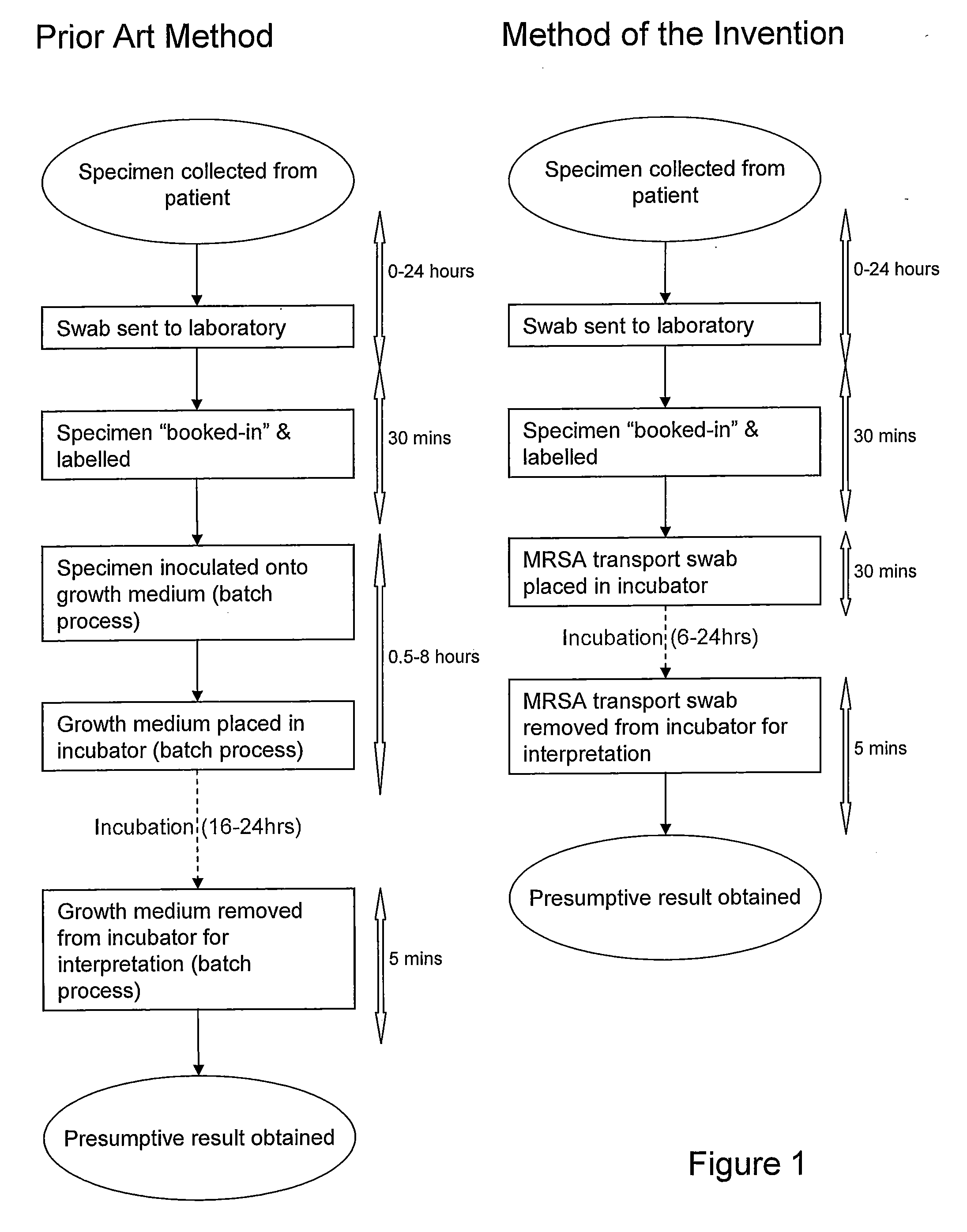Method of screeing for pathogens
a pathogen and pathogen technology, applied in the field of pathogen screening, can solve the problems of wasting the time of laboratory technicians, increasing the risk of contamination or other mishaps, and iatrogenic infection by mrsa, so as to promote and stimulate the growth of mrsa, and improve the effect of detection accuracy
- Summary
- Abstract
- Description
- Claims
- Application Information
AI Technical Summary
Benefits of technology
Problems solved by technology
Method used
Image
Examples
example 2
A Semi-Solid Medium Formulation Suitable for Use in the Various Aspects of the Invention
[0072]The semi-solid medium will contain the following:
[0073]a nutritive broth base, such as tryptone soy broth or nutrient broth, containing at least one gelling agent. Such gelling agents could include agar, agarose, Sephadex™ or gelatine. A concentration range would be required to provide a gel strength which prevents spillage of the medium from the culture tube or bottle, and enables optimal contact of the medium with the swab. One example is a concentration of agar between 1 and 8 grams per litre;
[0074]at least one substance to inhibit the growth of organisms other than MRSA, such as meticillin, oxacillin, various cephalosporins or cephamycins;
[0075]at least one substance to inhibit the growth of organisms other than Staphylococcus aureus. Such substances include polymixin B, colistin sulphate, aztreonam, lithium chloride, deferoxamine mesylate, amphotericin B, fluconazole, anisomycin or oth...
example 3
[0081]As shown in the Flow diagrams in FIG. 1, the method of the invention (timeline on the right hand side) provides a more streamlined process than the prior art method (timeline on the left hand side) and, in practice, gives rise to a presumptive result several hours in advance of the conventional prior art technique.
PUM
| Property | Measurement | Unit |
|---|---|---|
| temperature | aaaaa | aaaaa |
| temperature | aaaaa | aaaaa |
| temperature | aaaaa | aaaaa |
Abstract
Description
Claims
Application Information
 Login to View More
Login to View More - R&D
- Intellectual Property
- Life Sciences
- Materials
- Tech Scout
- Unparalleled Data Quality
- Higher Quality Content
- 60% Fewer Hallucinations
Browse by: Latest US Patents, China's latest patents, Technical Efficacy Thesaurus, Application Domain, Technology Topic, Popular Technical Reports.
© 2025 PatSnap. All rights reserved.Legal|Privacy policy|Modern Slavery Act Transparency Statement|Sitemap|About US| Contact US: help@patsnap.com

